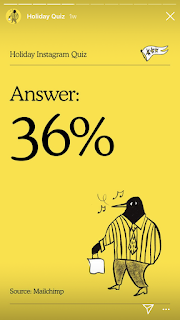It's good for instructors to update class presentations as frequently as they can. The current material is important to students, of course. I always thought it made me seem on top of the subject matter, and students seemed to appreciate that.
The chief purpose of this blog is to make updating easy by providing relevant current information. The blog posts try to be 'think pieces' with update links attached when they become available. The pages contain section-specific links. There are so many of those, I started a new page for 2018 and I plan to do the same thing for 2020. It's really easy to find content that is directly related to content in the book. For instance, I just posted in Chapter 12, Section 2, a link to a news story about L'Oreal and its continuing emphasis on customer experience, this time by forging an AR agreement with Facebook.
I try to note when a link contains a video that would be useful in the classroom. I was always a bit offended--although not particularly surprised--when students were obviously paying keener attention to a video than they were to me! I do think it's a good way to keep students engaged and keep them abreast of current happenings. I don't watch a lot of videos myself so I probably miss a lot of good ones that instructors would find useful. If you find new ones or have favorites that are still current, please share them in a comment. We'd all be grateful!
Updating the PowerPoint Slides
It's quick and easy to add updated slides to the presentation for the particular chapter. You might consider hiding older slides, although if students are following the book closely they may wonder where that content is. Probably better to leave it in and briefly describe how it's been superseded. The exception to that is statistical charts or graphs. Students need the new data, not the old and you can just quickly refer to the date. I don't post a lot of statistics because they get old so quickly. An email subscription to eMarketer or Marketing Charts helps keep the statistics up to date. Or just search for the statistic in question.

via GIPHY
It's important to distinguish the new slides from the ones that came with the book. It's easy to add a new slide before or after the outdated one. The new one has the PPT template, so it looks good in the flow of the presentation. However it looks like the others. When I saw students visibly confused ("where did this come from?") I realized I had to distinguish the new slides somehow.
The template for this edition is attractively simple--thank you Cengage! You could use a colored background or perhaps add a colored bar alone the right side or at the bottom.
I found it was more fun to use an image of some kind. I generally used the same one all semester, but you could certainly change from one presentation to another or even have different images for different kinds of content. I'm suggesting two different types of images here.
Personally, I find the winky cat quite annoying if I look at it for very long. Even if it was very small in the upper right hand corner, where I put mine, it would annoy me. I'd be willing to try it to see what my students thought, though. The site called Giphy has all sorts of animations available just for registering. This is a sticker and the embed was too large for what I needed here. I reduced the size by changing the HTML. I wonder if I could have made it a square, which would have been better as an icon. I can't find any way to crop it, which is what I'd really like to do.
The NEW! image came from a Google image search. Be creative with keywords and you can find all sorts of cool stuff.
I was always pleased when students considered me even moderately cool, not just a boring old foggy! If that is one of your goals, I hope these suggestions have been useful and we'd all like to hear your proven classroom techniques in the comments!





















